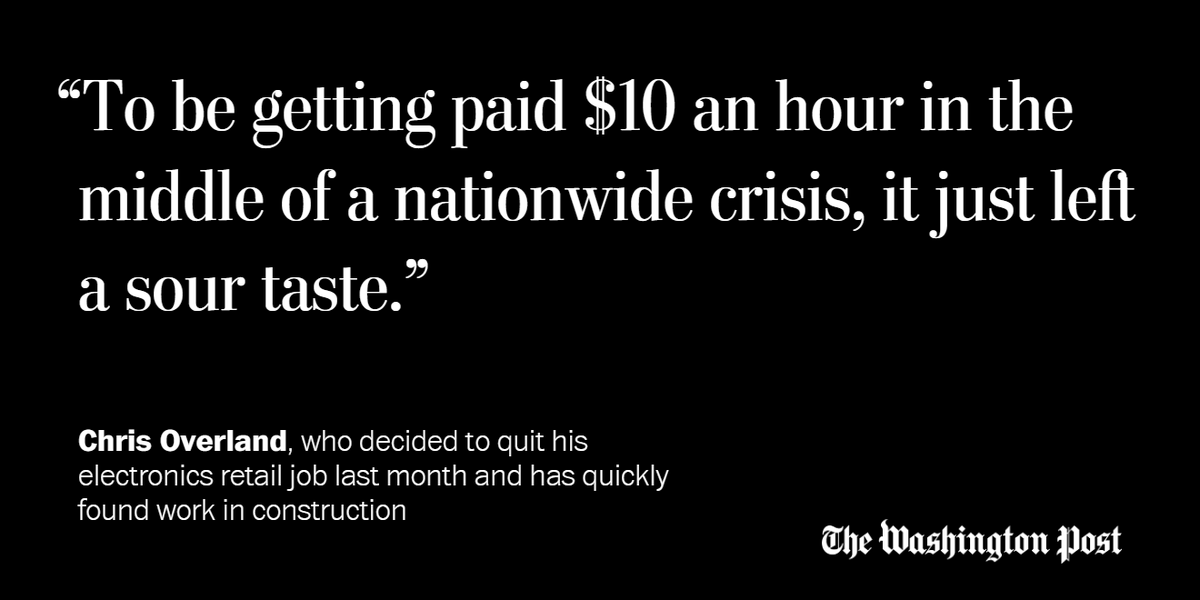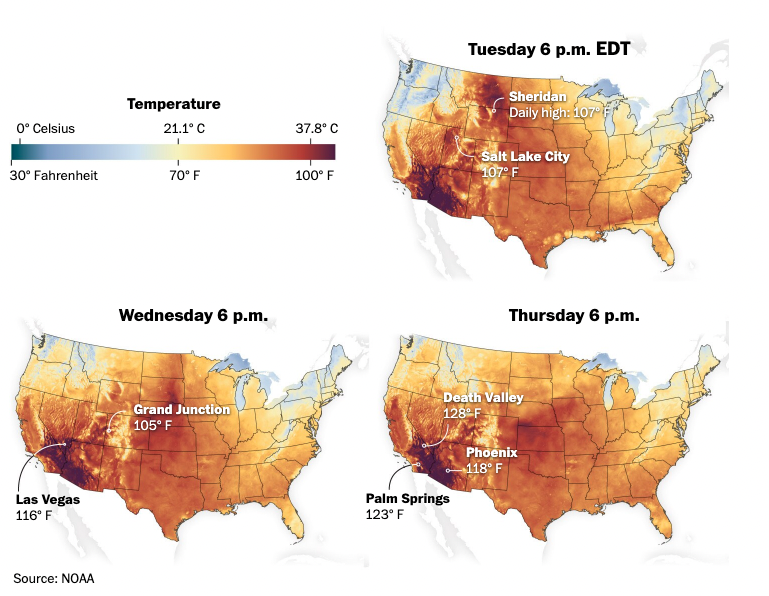
Retail workers are quitting at record rates for higher-paying work: "My life isn’t worth a dead-end job" wapo.st/3j21qKv
Some 649,000 retail workers put in their notice in April, the industry’s largest one-month exodus since the Labor Department began tracking such data more than 20 years ago.
Overall, nearly 3 percent of the U.S. workforce quit in April. washingtonpost.com/business/2021/…
Overall, nearly 3 percent of the U.S. workforce quit in April. washingtonpost.com/business/2021/…
In interviews with more than a dozen retail workers who recently left their jobs, nearly all said the pandemic introduced new strains to already challenging work: longer hours, understaffed stores, unruly customers and even pay cuts. wapo.st/2UnBCyh 







Overall, retailers had nearly 1 million job openings in April, more than twice as many as they did a year ago.
Some labor experts say retailers are not going far enough in addressing structural problems in the industry. washingtonpost.com/business/2021/…
Some labor experts say retailers are not going far enough in addressing structural problems in the industry. washingtonpost.com/business/2021/…
Analysis: Hiring was much weaker than expected in April. Wall Street thinks it’s a blip, but there could be much deeper rethinking of what jobs are needed and what workers want to do on a daily basis. wapo.st/3iZR91h 

Labor professors and economists say the pandemic made it harder for the nation’s 15 million retail workers to find reliable child care and public transportation. But now, analysts say, workers have begun to realize they have options. wapo.st/3gUlVWX 

• • •
Missing some Tweet in this thread? You can try to
force a refresh
















